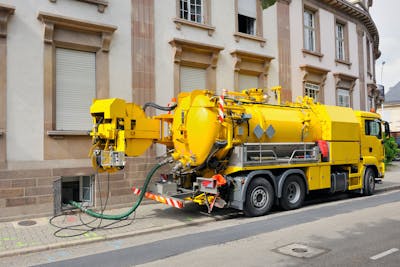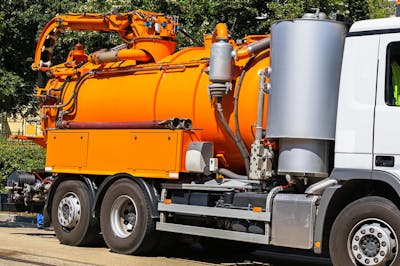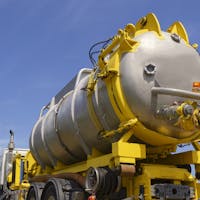Find the Best Utility Locating Services Near You
- Post a job
- Receive multiple quotes
- Choose your preferred Utility Locating supplier
Where do you need Utility Locating?
Describe your job and our suppliers will send you quotes
789 Utility Locators on iseekplant
With a vast directory of 789 utility locators available on iseekplant, you can choose the best equipment and services for your utility locating needs. As underground utilities become increasingly complex, it's crucial to have the right tools and expertise for pipe repair work or digging trenches for your project.
Our platform combines the top utility locating companies and equipment suppliers in Australia. This way, your project proceeds without the hazards of accidentally striking buried utilities.
This quick guide highlights utility locating and the standard hire rates. In addition, we'll cover the standard equipment commonly used by our suppliers, the overall ground-penetrating radar process and how to interact with services and utility companies.
Utility Locating Rates Guide
While seemingly straightforward, the utility locating process has multiple facets influenced by the equipment, the project and the site. Choosing the right equipment and understanding its associated costs is crucial for a successful project.
The table below breaks down the average rates for different equipment types in utility locating.
Average Rates for Utility Locating Equipment
| Equipment Type | Average Daily Rate (Wet) | Average Daily Rate (Dry) |
|---|---|---|
| Ground Penetrating Radar (GPR) | $250 - $500 | $200 - $450 |
| Electromagnetic Locator (EML) | $150 - $350 | $100 - $300 |
| Acoustic Locators | $100 - $280 | $70 - $250 |
| Metal Detectors | $70 - $150 | $50 - $130 |
| CCTV Inspection Cameras | $300 - $600 | $250 - $550 |
Note: All prices listed on this page are estimates, exclude GST and are in AUD. Price estimates can vary based on location, model and additional requirements.
Other Costs to Consider with Utility Locating
The base rate is only a part of the cost when working with utility locating suppliers. Other expenses may depend on your project, location and other unforeseen circumstances. This table shows these additional costs and provides a brief description of each:
| Additional Cost | Average Rate | Description |
|---|---|---|
| Operator Training | $100 - $250 per session | Fees for training sessions to understand and handle the equipment efficiently. |
| Equipment Calibration | $50 - $150 | Regular calibration ensures the equipment's accuracy and reliability. |
| Transport & Logistics | $70 - $300 | Costs associated with moving equipment to and from the job site. |
| On-Site Analysis Software | $50 - $200 per license | Software licenses for analysing data and creating detailed reports of located utilities. |
| Emergency Call-Outs | Varies based on location | Urgent requests for utility locating, usually charged at a premium rate. |
Knowing estimates for additional costs helps you budget for your project more quickly and ensures the smooth execution of your utility locating tasks. Always factor in these potential additional costs to avoid surprises in your project budget. Use our Get a Quote tool to connect with our suppliers for an accurate and customised quote for your project today!
Equipment Used in Utility Locating
Utility locating is a vital task that ensures the safe identification of buried utilities, preventing potential damage or accidents. The precision required for this task means you must use specialised equipment to guarantee accuracy. Here's a list of commonly used equipment for utility locating and their significance:
- Ground Penetrating Radar (GPR): A non-intrusive tool that uses radar pulses to find subsurface utilities. Ground Penetrating Radar provides a clear image of the subsurface, making it invaluable for detecting non-metallic utilities like plastic pipes.
- Electromagnetic Locator (EML): This equipment is vital for detecting metallic utilities. EMLs trace the electromagnetic field around metallic objects, offering precise utility detection and mapping.
- Acoustic Locators: These use sound waves to detect utilities. Acoustic locators are especially useful when detecting leakages in pipes or identifying blockages.
- Utility Mapping Software: After detecting utilities, mapping them is the next step. This software helps create accurate digital maps of the detected utilities, simplifying future reference.
- Metal Detectors: Primarily used for locating metal pipes and covers, metal detectors are a basic yet crucial tool for utility locating.
- Pipe and Cable Locators: These are designed to locate and trace buried pipes and cables, ensuring that utilities aren't accidentally damaged during excavation.
The table below shows the key features and typical uses of each equipment.
Utility Locating Equipment
| Equipment Type | Key Features | Typical Use Cases |
|---|---|---|
| Ground Penetrating Radar (GPR) | Uses radar pulses, detects non-metallic utilities | Locating plastic pipes, voids and other non-metals |
| Electromagnetic Locator (EML) | Detects electromagnetic fields around metallic utilities | Locating metallic pipes and cables |
| Acoustic Locators | Uses sound waves, detects leakages and blockages | Finding blockages in pipes |
| Utility Mapping Software | Creates digital maps of utilities | Mapping and documentation of located utilities |
| Metal Detectors | Detects metallic objects | Finding manhole covers, metal pipes |
| Pipe and Cable Locators | Traces buried pipes and cables | Mapping the path of underground cables and pipes |
Utility locating ensures the safe and efficient execution of construction and maintenance tasks. Using the appropriate equipment guarantees your crew identifies underground utilities accurately, reducing risks and potential costs.
Ground Penetrating Radar Process & Types
As you've learned from this page, ground-penetrating radar (GPR) is a non-intrusive tool that detects utilities, structures and anything underground without excavation. It provides vital data to users that significantly reduces the risk of unintentionally striking and damaging buried utilities.
Here is a quick summary of the ground-penetrating process:
Initial Survey Planning
Before deploying GPR, defining and pre-surveying the dig area is crucial to identify possible sites of interest or hazards. Proper planning ensures the survey covers all essential areas, maximising the efficiency and accuracy of the dig.
Setting Up the Equipment
Depending on the specific requirements of the survey, calibrating the GPR system is crucial to obtain accurate readings from the subsurface.
Conducting the Survey
In this step, you move the GPR system over the survey area, sending high-frequency radio waves into the ground and capturing what's below. The received signals are processed to form an image or map of the subsurface. A skilled operator can identify utility lines, voids or other structures based on the data patterns.
Documentation
The findings from the GPR survey are documented and reported to the concerned parties, usually through maps or images. Proper documentation aids in planning, construction or excavation tasks, reducing the risk of damage.
Types of Ground Penetrating Radar
The table below shows you the most common types of GPR equipment that our suppliers can offer:
| GPR Type | Frequency Range | Depth Range | Common Uses | Pros | Cons |
|---|---|---|---|---|---|
| High-Frequency GPR | 1 GHz - 3 GHz | 0-1m | Concrete inspection, road assessment | Offers detailed resolution, ideal for shallow applications | Limited penetration depth; can't detect deeper objects |
| Mid-Frequency GPR | 100 MHz - 1 GHz | 0-10m | Utility detection, environmental remediation | Balances between depth and resolution | Might not be as detailed as high-frequency GPR |
| Low-Frequency GPR | 10 MHz - 100 MHz | Up to 50m | Geological studies, deep utility detection | Can penetrate deeper into the ground, ideal for geophysical applications | Lower resolution; less detailed imagery |
Interacting with Services & Utility Companies
Ensuring smooth communication and coordination with utility companies is critical before taking on any excavation or construction project. Notifying the relevant utility companies ensures safety and helps you avoid unnecessary costs or project delays.
This list details the steps in working with services and utility companies before you proceed with your project:
- Initial Inquiry: Reach out to utility companies for preliminary information on existing underground services.
- Detailed Locating: Once you've identified the utilities, use specialised equipment to pinpoint their locations.
- Documentation & Reporting: Share your findings with utility companies. They can provide additional insights or correct any discrepancies.
Being proactive in your interactions can save time, money and potential headaches down the road. Always approach each project with due diligence and respect for the essential services below.
Ready to Begin Your Utility Locating Task?
iseekplant is here to simplify your quest to find the premier equipment tailored for your utility locating needs. With an expansive network at our disposal, rest assured you'll secure the ideal solution swiftly. If you're ready to dig, our platform can connect you to our network of surveyors and suppliers of excavators, dozers and dump trucks.
Whether it's a small construction project requiring precision or a large-scale urban development, our directory has the tools you need. For direct assistance or any enquiries, email us at projects@iseekplant.com.au or ring us at 1300 691 912. Eager to move forward? Click 'Get a Quote' now!
Popular Utility Locating Locations
Become a supplier
Recent Utility Locating reviews
"Amazing communication. And helped me through it all great company to work with"
- Sally LewingtonView profileHow It Works
Utility Locating FAQs
Here are some frequently asked questions and tips on finding the right utility locating supplier for your job.
What do we have to offer?
Want to Know More?

What are the best vacuum truck manufacturers?
When you’re looking to hire a vacuum truck for a vacuum excavation job...

Do you Need a Licence to Operate a Vacuum Truck?
Whether you need a license to operate a vacuum truck or not can be a di...



